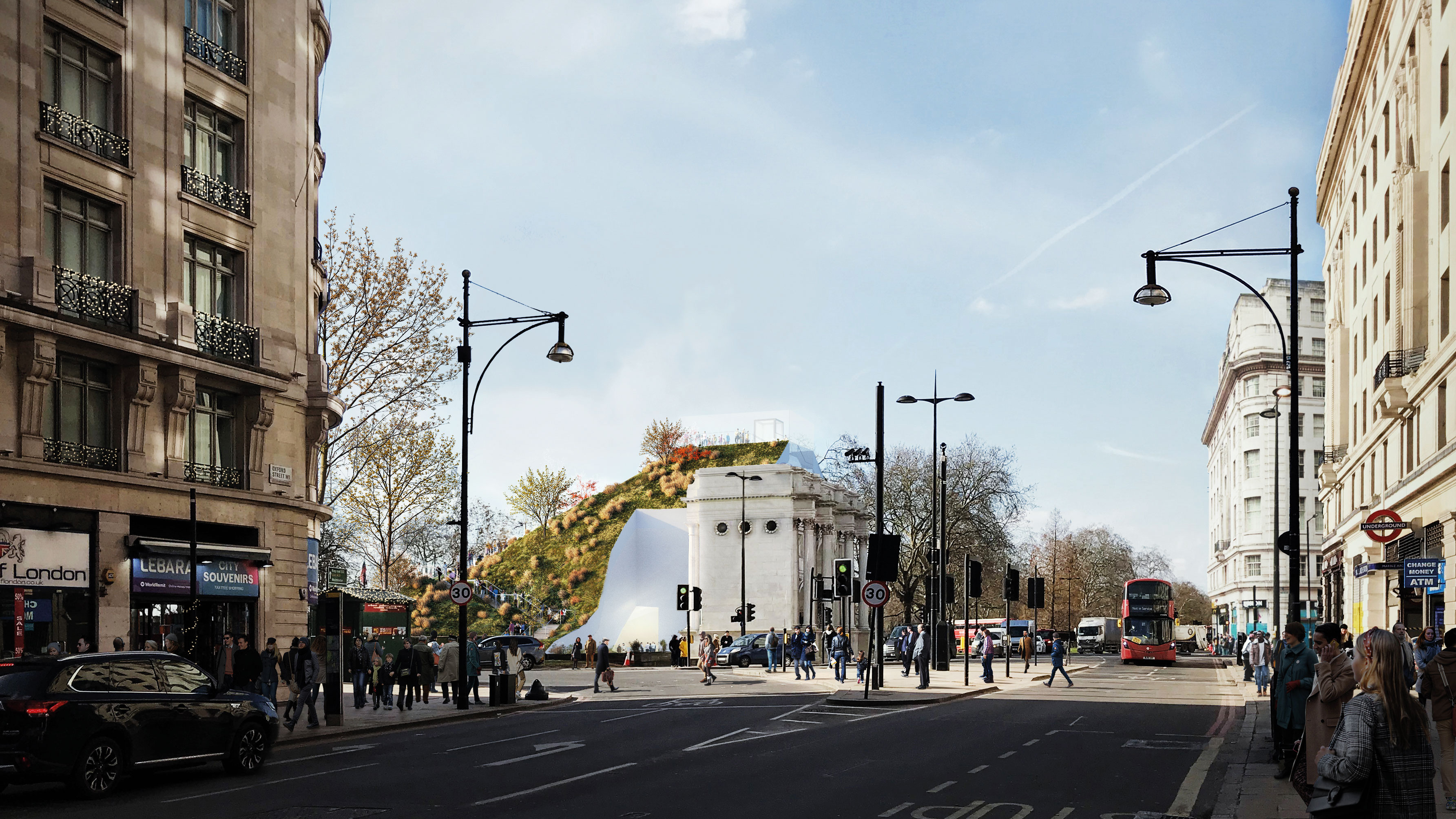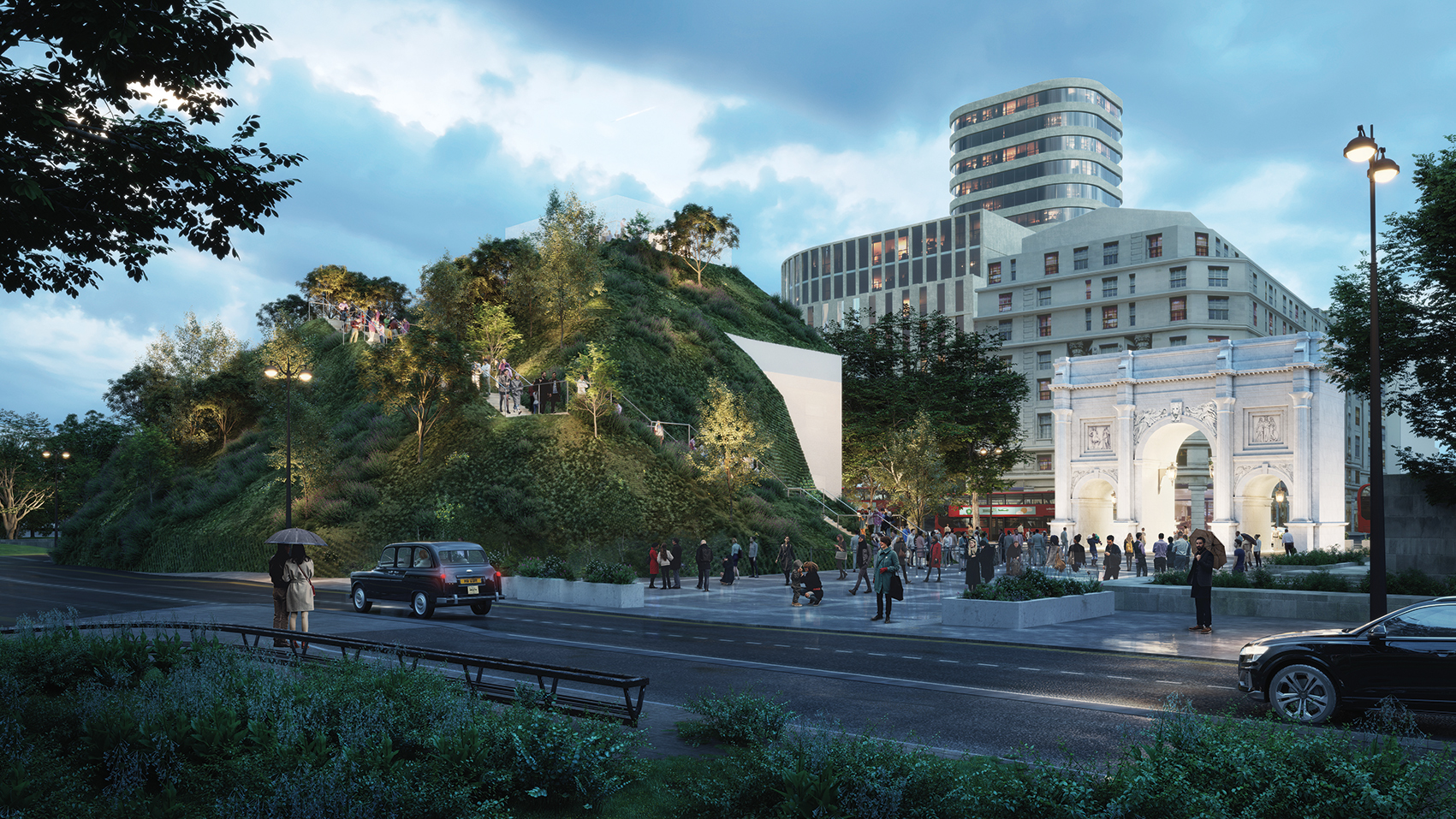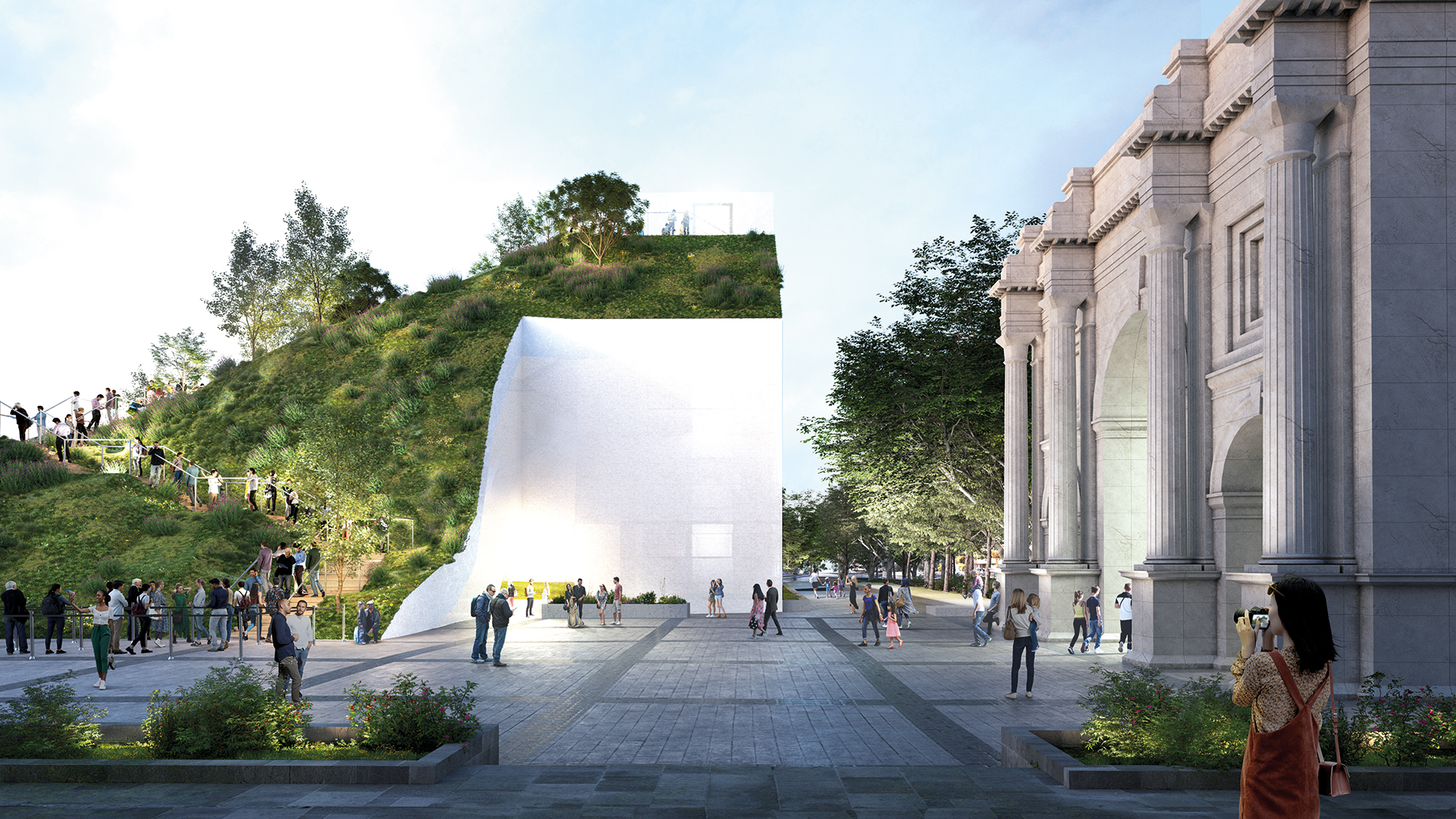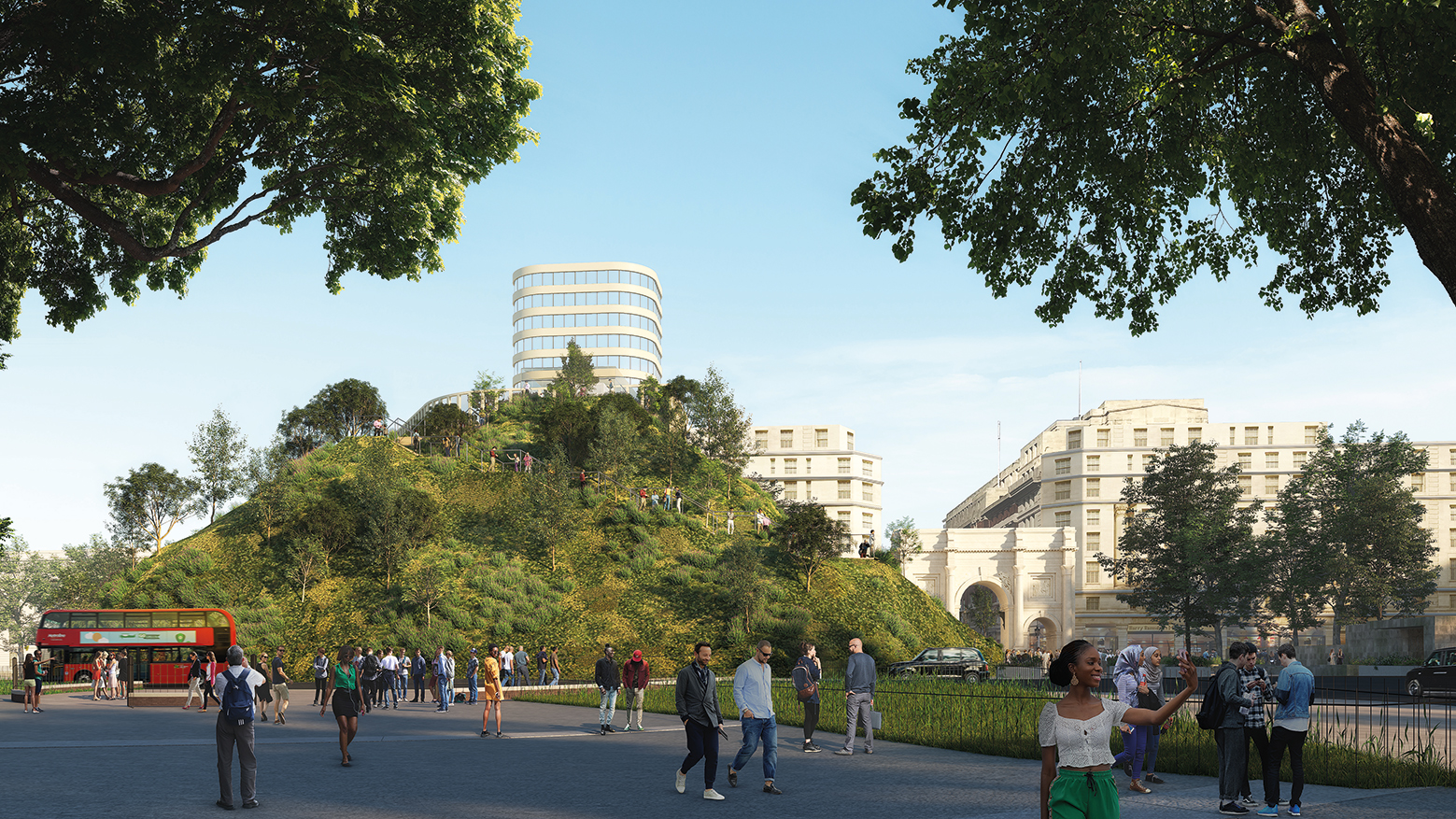
A temporary installation will be introduced next to London’s Marble Arch this summer as part of wider plans to revive Oxford Street and the wider district.
THE Oxford Street District is a major part of the West End and is one of the world’s most visited destinations. Approximately 200m people visit the district each year, and 70 per cent of these travel by underground. The area is also home to more than 38,000 residents and employs over 155,000 people.
Deterioration of buildings and public realm, as well as pedestrian congestion and high volumes of traffic have caused significant issues in the area, while the changing nature of retail, the arrival of the Elizabethan Line and Covid-19 pose new challenges and opportunities.
bold vision
Westminster City Council has launched plans to revitalise the area. The new Oxford Street District (OSD) framework had been developed with key strategic partners to deliver a bold new vision and framework to ensure the successful long-term future for the nation’s high street, as the greenest, smartest, most sustainable district of its kind anywhere in the world. The plans aim to restore the area as the must-visit destination of choice for domestic and international visitors, when restrictions ease, as well as the place to start, grow and expand businesses.
The council has already committed £150m to kickstart the OSD programmes and attract inward investment, taking full advantage of the Elizabeth Line opening

in 2022 - estimated to bring 60m pedestrians a year - and the area’s links to the wider West End and beyond.
Immediate projects include encouraging a wider range of businesses through a sustained change towards forward-looking brands for a more varied range of shops, including pop-ups, offices, restaurants and cultural or leisure activities.
Marble Arch Hill
Kickstarting the plans is a temporary visitor attraction next to Marble Arch, which is due to be delivered this summer. Designed by MVRDV, Marble Arch Hill aims to enhance the historic Marble Arch and takes inspiration from the history of the site. Marble Arch once marked the corner of Hyde Park, but in the 1960s new roads were added that turned the arch into a traffic island, disconnected from the rest of the park. MVRDV’s design introduces a park-like landscape of grass and trees, and lifts this recreated corner of Hyde Park to create a 25m viewpoint that gives visitors an overview of Oxford Street and the park, and a new perspective on Marble Arch itself.
Visitors will climb to the viewpoint via a path that winds its way up the hill’s southern side, after which they will descend into a great hall in the heart of the hill, a hollowed-out space that will be used for events, exhibitions and other activities. The exit from the hall is located in a notch in the corner of the hill that ensures the temporary structure is offset from Marble Arch. In this way, visitors are confronted with multiple views on the arch, giving them a new perspective on an object they might otherwise take for granted.
“This project is a wonderful opportunity to give an impulse to a highly recognisable location in London”, says MVRDV founding partner Winy Maas. “It’s a location full of contradictions, and our design highlights that. By adding this landscape element, we make a comment on the urban layout of the Marble Arch, and by looking to the site’s history, we make a comment on the area’s future. We enlarge the park and lift it at the corner. Marble Arch Hill strengthens the connection between Oxford Street and the park via the Marble Arch. Can this temporary addition help inspire the city to undo the mistakes of the 1960s, and repair that connection?”
Sustainability is an important consideration in the design of Marble Arch Hill. As a temporary structure, it is critical to ensure that it produces as little waste as possible when removed. Therefore, the design is created with the reuse of elements in mind. The scaffolding structure can be disassembled and reused, while the elements that make up its top layer – wood, soil, grass, and trees – will all find new uses in nearby gardens and parks.
Due to open in July, it has been estimated that the 25m high attraction could be enjoyed by up to 200,000 people whilst it is operational, subject to whatever Covid restrictions remain at the time. This would support millions of pounds in incremental spending for the local economy across the retail, hospitality and leisure sectors in the West End.
quick wins
The plans include a number of other temporary interventions to reinvigorate the high street for new patterns of use, safely welcoming people back to the district post-lockdown. The proposals include complementary streetscape changes designed to improve the look and feel of the area with additional greening and seating; increased footway space on Oxford Street to enable safe, distanced access to the district; spaces for outdoor performance, features that create a sense of enlivenment, with ‘smart’ technology-based installations, and concept lighting.
These quick-win interventions present an exciting opportunity to test and experiment, as the first step towards the longer-term revitalisation of the district.

